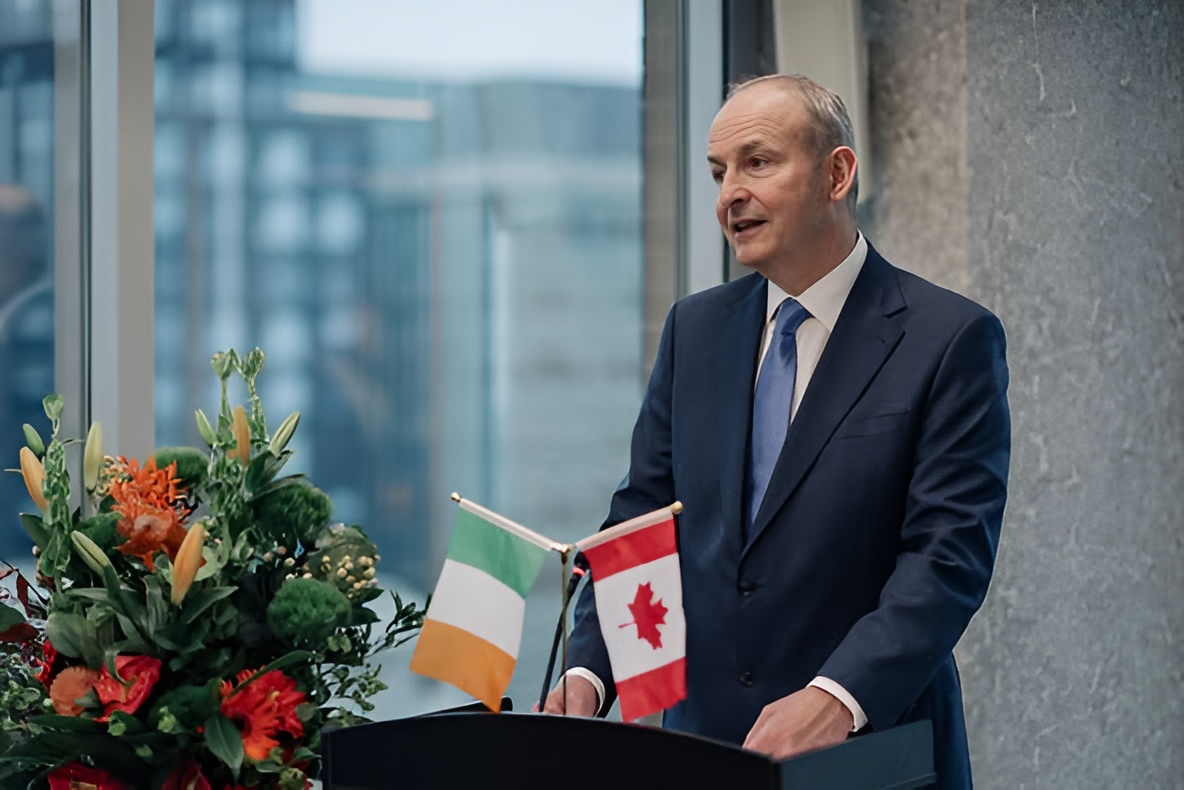As AI and data centres surge, offshore wind Ireland becomes crucial for Ireland’s energy security and renewable energy future.
DUBLIN/NEW YORK, Sept 27 – Offshore wind Ireland is now at the heart of Ireland’s energy strategy, Taoiseach Micheál Martin has said. Speaking in New York this week, Martin warned that surging AI energy demand in Ireland and the explosive growth of data centres could trigger a full-blown Ireland energy crisis unless large-scale offshore wind projects are accelerated.
“We just have to get those offshore wind farms over the line, because that is the key for our self-reliance and independence in terms of energy,” Martin said.
“And also then it would enable us to have some future in terms of AI, because AI will use an enormous amount of energy, and we’re currently in difficulty on that front.”
Martin emphasized that offshore wind is not just a climate measure—it is essential for maintaining grid stability and supporting Ireland’s growing digital economy.
Ireland’s Data Centres: A Surge in Energy Demand
Ireland has emerged as the data centre capital of the world, hosting 89 operational centres with over 40 more in the pipeline. Many are clustered near Dublin, forming energy-intensive hubs.
These facilities alone now consume around 22% of Ireland’s electricity, up from 21% in 2023 and just 5% in 2015—a staggering 531% increase over nine years.
“AI, cloud computing, and digital services will use an enormous amount of energy. That is the gap we must close with offshore wind,” the Taoiseach said.
The rapid growth of AI-driven workloads is adding further pressure, creating a potential Ireland energy crisis if offshore wind deployment lags.
Offshore Wind Ireland: Scaling Up for 2030 and Beyond
The Taoiseach said Ireland’s next decade will depend on delivering offshore wind Ireland at scale. Current capacity is modest—just 25 MW at the Arklow Bank Wind Park—but targets are ambitious:
- 5 GW by 2030
- 20 GW by 2040
- 37 GW by 2050
“In Ireland, the big issue for us will be offshore wind. We have already proven the impact of renewables in terms of our onshore wind performance over the last 20 years,” Martin said.
“It represents a very substantive part of our energy now. I think the offshore wind is the next big one for us.”
Ireland’s expansive Exclusive Economic Zone (EEZ)—seven times the size of its landmass—combined with powerful Atlantic winds, gives it a competitive edge in offshore renewable energy. Scaling these projects positions Ireland to supply both domestic demand and potentially export clean energy to Europe.
Policy and Investment Challenges
Despite these targets, development faces multiple hurdles:
- Planning and environmental delays can stretch projects over a decade
- Grid capacity is insufficient in some regions to handle large offshore flows
- Financing requires strong government support to attract private investors
The government’s Offshore Wind Action Plan aims to streamline approvals, upgrade transmission connections, and encourage foreign investment. Industry leaders warn that without faster execution, Ireland risks falling behind European peers like Denmark, the UK, and Germany.
AI, Climate, and Health Implications
Martin’s warnings coincided with former US President Donald Trump’s UN address, in which he criticized Europe for backing green energy, claiming it would “go to hell.”
The Taoiseach countered firmly:
“We would disagree with the US administration on this. We believe in the science, and also we believe that there are economic opportunities as well,” he said.
“From a public health perspective, which rarely gets mentioned, there are huge gains. If you take fossil fuels out of the equation, ultimately we’re all living healthier lives.”
He stressed that Ireland’s renewable energy future is a pathway to both sustainability and economic growth, creating opportunities in energy-intensive industries and technology.
Ireland at the Crossroads: Technology Meets Sustainability
The intersection of AI growth, data centre expansion, and climate commitments places Ireland at a pivotal moment. Scaling offshore wind Ireland is the most viable solution to:
- Meet AI energy demand in Ireland
- Prevent an Ireland energy crisis
- Achieve a net-zero and sustainable Ireland renewable energy future
- Attract and maintain international investment in high-tech and industrial sectors
Failure to act could leave the country dependent on imports, vulnerable to price shocks, and unable to support the digital economy.
Conclusion: Offshore Wind Ireland Is the Nation’s Last Defense
The Taoiseach’s message is unequivocal: offshore wind Ireland is Ireland’s last line of defense against an energy crisis fueled by AI and data center growth. Delivering on these ambitious targets will secure Ireland’s renewable energy future, stabilize the grid, and allow Ireland to lead Europe in clean power generation.
“Offshore wind is not optional—it is essential to Ireland’s energy security and future prosperity,” Martin said.

8ai6ko